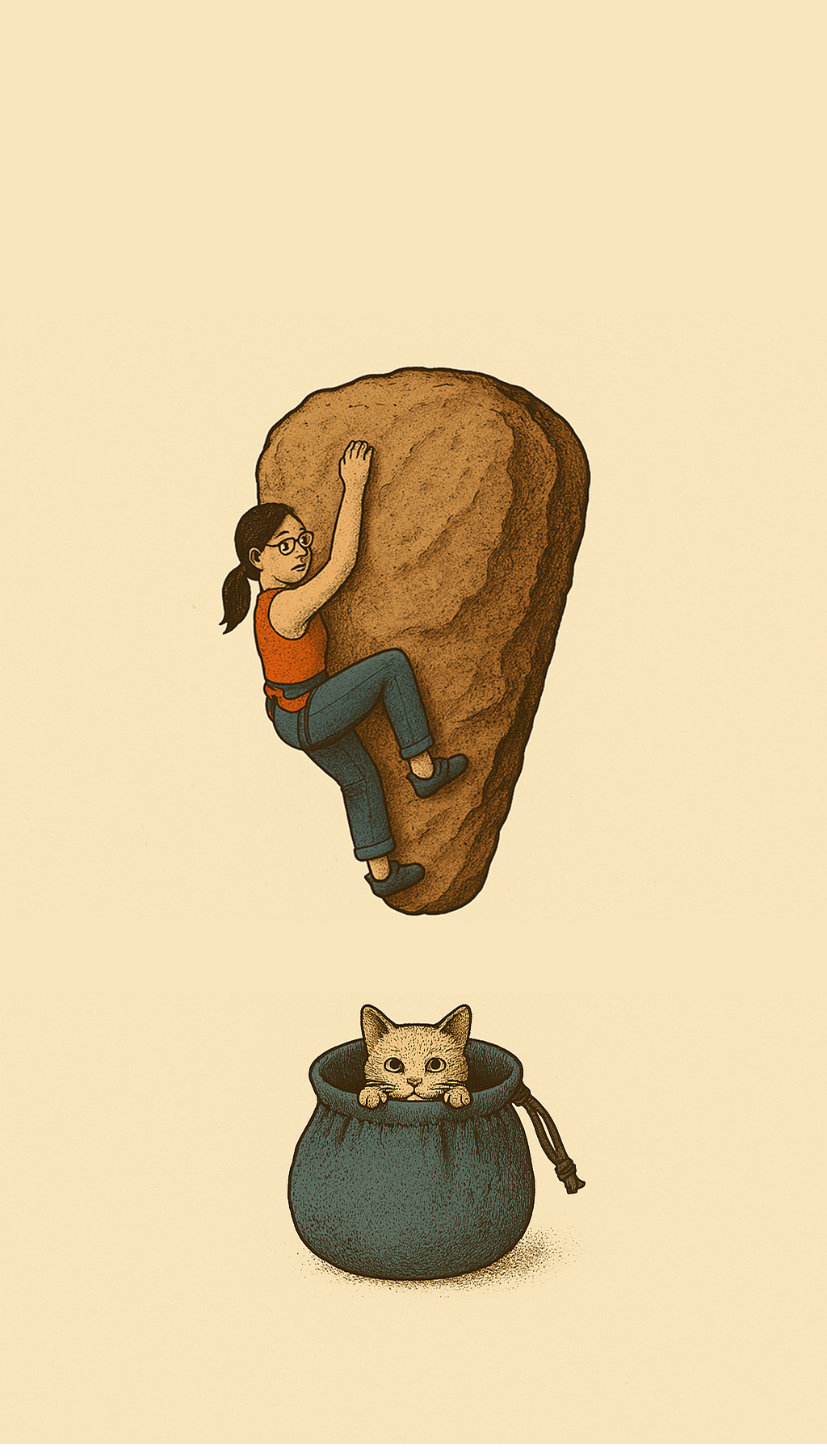The Five-Finger Piano Drill for Climbers: Anytime, Anywhere
A Portable Precision Practice for Matching, Dexterity, and Movement Control
One of the best parts about developing intelligent, stable feet in climbing is that it frees your fingers to be what they’re meant to be—not just anchors, but instruments. As the lower body matures into its stabilizing role, the upper body can finally refine the fine motor coordination, precision, and creative control that technical climbing asks of us.
Enter the Five-Finger Piano Drill—a deceptively simple practice you can do on almost any flat surface. It’s portable, low-stakes, and perfect for rest days, warm-ups, or any idle moment when you’d otherwise be tapping at your phone. What it trains, however, is far from basic.
Why This Drill Matters
On the wall, especially on tension-heavy sequences or compression problems, we often find ourselves hovering between holds, trying to coordinate a controlled transition of force across our fingertips. The timing, sequencing, and smoothness of these shifts are critical—and often unconscious. This drill brings them into full awareness.
What it develops:
Isolated finger coordination (like pianists or typists rely on)
Smooth force distribution across fingers
Sequencing for matching or hand transfers
Tension modulation without power dependency
Pre-movement awareness for micro-precision
How To Do the Basic Drill
Find a surface – Any flat edge will do: a tabletop, book spine, doorframe, or campus rail. Keep your fingers at or below eye level for best visibility and control.
Set your position – Bring your hands together in front of you so that your index fingers are touching. Let your thumbs rest in a relaxed pinch below the edge.
Start with 4 fingers of your left hand and 1 (index) of your right hand pressing down. Five fingers only on the surface at all times.
Begin your "piano scale":
Lift your left pinky, place down your right middle.
Lift your left ring, place down your right ring.
Lift your left middle, place down your right pinky.
You’re now pressing with left index + full right hand.
Reverse the sequence to return to your starting position.
Repeat slowly, with rhythm and precision.
Advanced Variations to Deepen the Practice
To bring this from a warm-up to a neural training tool, try layering in these progressions:
1. Eyes Closed
Feel your way through the transitions. This builds proprioception and finger awareness without visual dependency—just like reaching blind for a far crimp on overhangs.
2. Metronome Timing
Use a metronome (60–80 bpm) or internal rhythm: 1 beat per change. This develops controlled tempo and helps you maintain consistency under pressure—especially useful for route sequencing and pacing.
3. Hover Pause
Add a one-second pause between each finger switch, hovering the lifting finger just off the surface. This trains deceleration, balance, and quiet control under tension.
4. Edge Variation
Try different contact surfaces: thick edge, thin edge, rounded wood, metal, fabric. Each change challenges tactile feedback and force modulation—great for preparing skin and mind for varied hold textures.
5. Add Body Position
Once familiar, try the drill in a squat, plank, or hip-hinge position. This integrates full-body control with your fine motor focus—blending stability from your core and lower body into your upper limb dexterity.
Why It’s Worth Doing
Like piano scales for musicians, this drill isn’t flashy—but it is foundational. It lets you:
Refine matching technique for crimp-to-crimp transitions
Prevent flailing or overgripping in hand swaps
Improve stillness and accuracy in dynamic or high-tension moments
Integrate bilateral coordination into your climbing “language”
And maybe most importantly—it lets your fingers play. To feel their own rhythm. To enjoy motion, pressure, and texture for their own sake, not just as tools of force.
Where and When
Do it:
In the gym between burns
On the train or at your desk
As part of a pre-climb warm-up
On rest days to stay neurally engaged
This is a perfect micro-practice to slot into the in-between moments of your climbing life—the moments where skill gets built, quietly and consistently.
